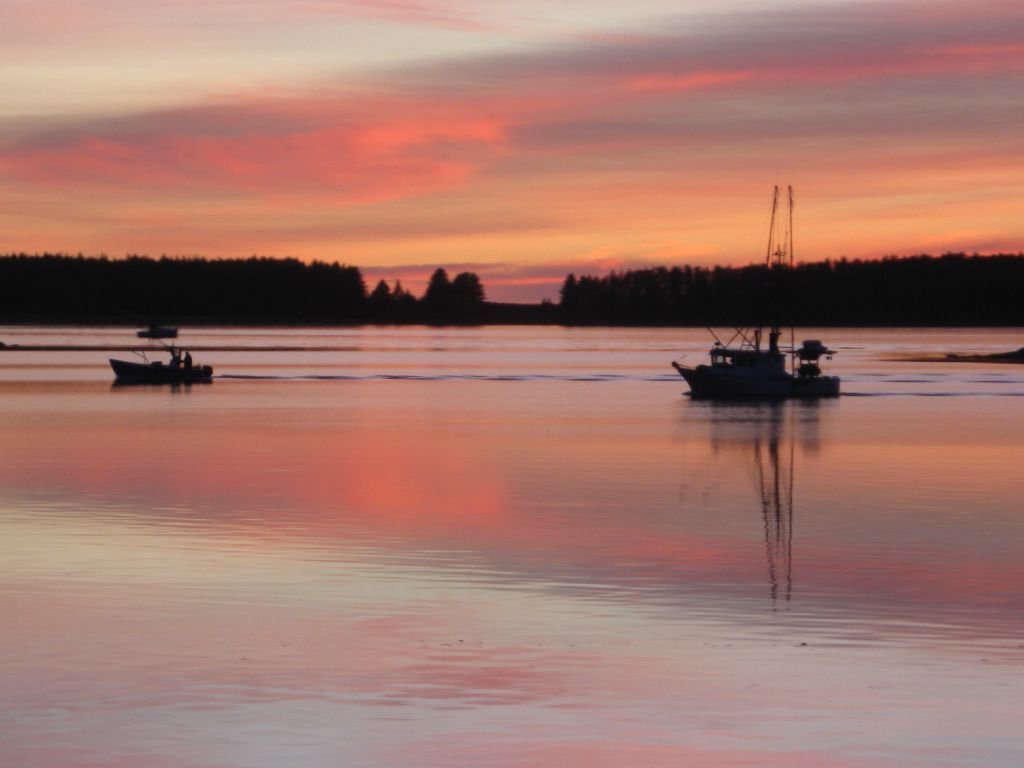
Saltwater Fishing




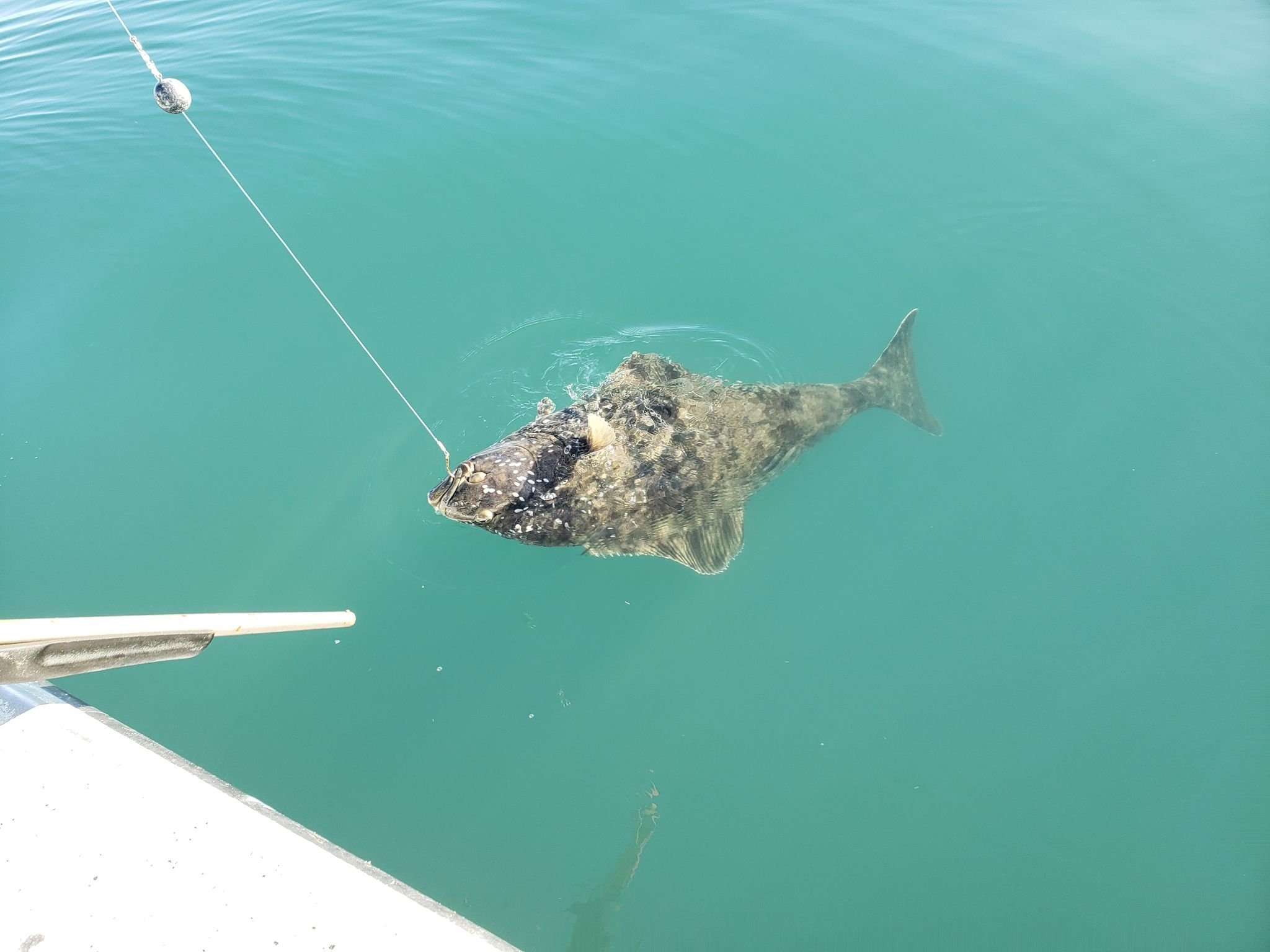

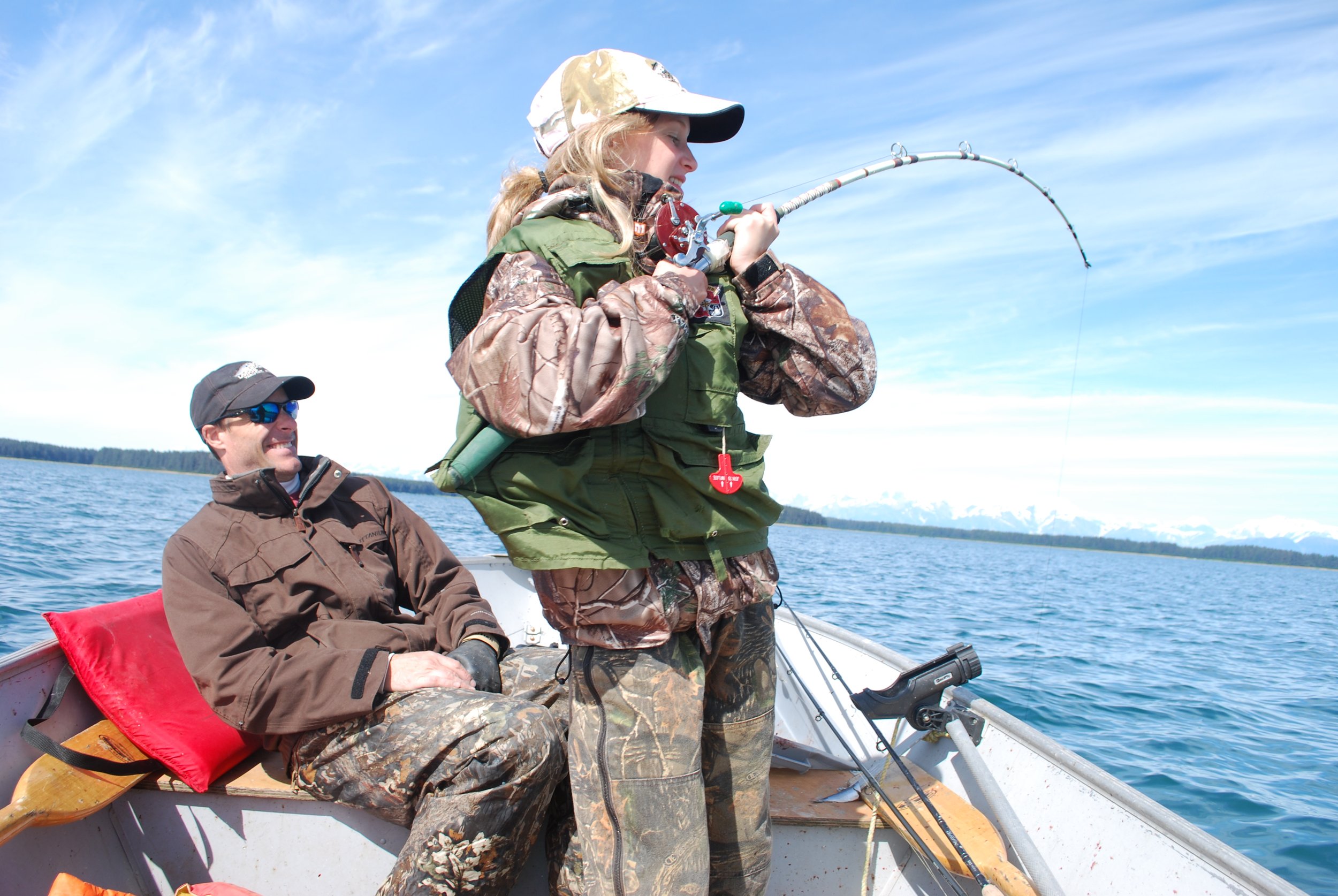
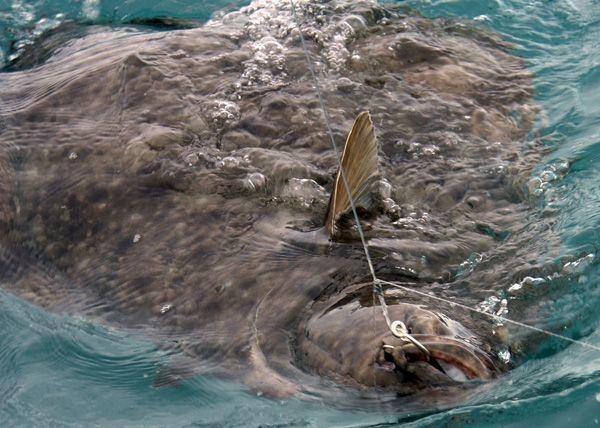




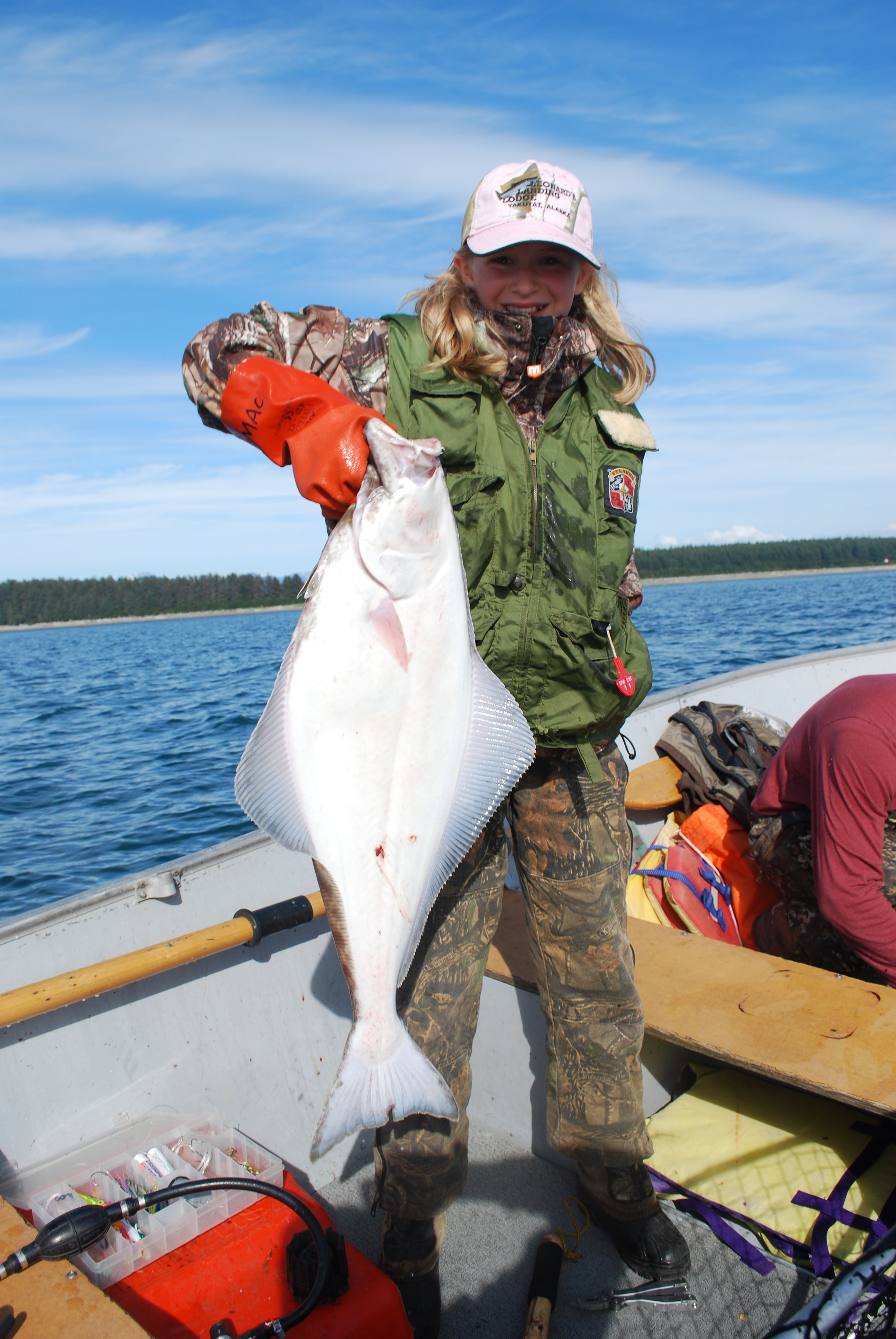
















Saltwater Fishing
There is no better location for an Alaskan do-it-yourself saltwater fishing adventure than Leonard’s Landing Lodge! Picture this…. You walk out of your cabin to a private dock and jump into the rental skiff that you operate. No need to tip a guide or captain. Within an hour, you can catch some of the best tasting saltwater fish while surrounded by the beauty of Yakutat Bay and the Wrangell-St. Elias Mountains. No need to drive to the marina, launch a boat, schedule a charter, or worry about who else will be on the boat with you. There is no run through the high seas to the fishing grounds, no grumpy deckhand telling you what to do, and you can pick which species you want to target. Best of all, when you return to the dock, all you need to do is tie off your boat, drop your catch off with the onsite processors, hang your gear in the lodge dry room, and throw a fresh fillet on the grill for dinner!
Our rental skiffs and dock are set up for the DIY angler. You have access to guest fish cleaning facilities with blast freezer access or onsite professional processing. We keep a shop stocked with bait, troll herring, weights, and flashers. We can equip you with quality rental rod and reel combos for trolling or bottom fishing, as well as, fish finders to keep you in the zone. Our staff is happy to provide info on tackle, tactics, and where to head for the current bite. When you head home, we can handle packaging and dropping off your frozen fish for shipping via Alaska Airlines Air Cargo, or fish boxes can be checked as additional bags.
Do you want to know where to go fishing, what gear to bring, and some tips for a successful fishing trip?
Check out the drop-down tabs below!
-
Halibut, chinook (king) salmon, lingcod, coho (silver) salmon and black rockfish (sea bass) are all available and routinely caught within an hour from our dock. The amazing fishery of Yakutat Bay allows multiple species to be targeted in one trip.
The waters where you will be fishing are sheltered from the wind and open ocean swells by a series of islands making it almost always calm enough to fish. These sheltered waters, with the shoreline always in sight, make this experience safe enough for children and comfortable for those who suffer from sea sickness. Before heading out for the day always check in at the office for the current marine forecast. Awareness of the current and forecasted conditions is a critical safety tool.
Generally there are two different sets of gear and tactics utilized. Bottom fishing with bait and jigs is used to target halibut and lingcod. Trolling and mooching gear and techniques are used for king or silver salmon fishing. Sea bass, which are plentiful and tasty, can be caught using either tactic when using the correct hooks. Aside from these targeted fish, there are at least a dozen other species, from small sharks to octopus, that could bite your line and make you wonder what you’re reeling in or what got away! Read through the drop-downs below for more specific information on the fish you wish to target.
Run Timing: The Saltwater fishing season runs from April through September but, like the freshwater fisheries, have peaks for different species. Run timing means not all species are present for the length of the season. Check the drop-downs below to see the peak timing of each species.
Navigation begins with an orientation in the office while consulting a chart of our local waters. We recommend you download the Navionics app on your phone. This will give you access to charts of the area while you are on the water. This app will also give you the advantage of having depth contours which can be very helpful in locating fish.
Always feel free to contact us regarding saltwater opportunities. Once you arrive in Yakutat, we are happy to give you more specifics on rigging, fishing locations, tackle and bait options as well as the current fishing report.
-
Fish Identification for salmon and rockfish is important. Smaller kings are illegal to possess and can easily be confused with silver and pink salmon. There are over a dozen species of rockfish you could catch, many of which you cannot harvest. There are great pictures and identification guides in the ADFG regulations that you can download to your phone and paper copies are available at the lodge. If you have questions ask us; if you don’t know what you caught, throw it back. https://www.adfg.alaska.gov/index.cfm?adfg=fishregulations.se_sportfish
Regulations for saltwater fishing are specific to species, location, resident/nonresident anglers and season. Your Alaska fishing license covers all species, although you will need a king salmon stamp with your license to target and retain king salmon. You may also need to record a catch on a harvest record for specific species.
Alaska Fish and Game makes in season changes to published ADFG Fishing Regulations https://www.adfg.alaska.gov/index.cfm?adfg=fishregulations.se_sportfish through Emergency Orders. Be sure to check for any changes in bag and possession limits. They are often changed throughout the season, especially for king salmon. ADFG Emergency Orders: https://www.adfg.alaska.gov/sf/EONR/index.cfm?ADFG=region.R1
Purchase your fishing license ahead of time. We recommend creating an account on the Alaska Fish and Game website and using the eSigned license format. This allows you to have a signed digital license on your phone and eliminates the need for a paper license. However, all charter boat captains require you show a paper fishing license. You can purchase and print a paper license from the website for this situation. https://store.adfg.alaska.gov
Waterproof pants or bibs, rubber boots, and a good rain jacket are highly recommended for a day on the water, rain or shine. Waders also work well in place of bibs and boots if you already have a comfortable pair. The rubber gear works well here, is durable and affordable and we stock a limited selection of pants and jackets in our gift shop.
-
Peak timing: May through July
Expected Size Range:
Halibut average 15 to 40 pounds, fish in the 50 to 75 pound range are not uncommon, and every summer we help multiple guests unload fish in the triple digits from their skiffs!
Lingcod averages 5 to 15 pounds and larger fish can be caught in deeper locations at the right time of year.
Fishing Techniques:
Halibut feed primarily by scent, so bait-fishing close to the bottom with salmon carcasses or herring is the preferred method. Be sure your weight or bait DON’T sit directly on the bottom. Alternatively, heavy jigs have proven successful as well.
Lingcod will often take bait, but are aggressive predators, so try drifting herring over rock piles to earn yourself strikes from this toothy fish. Their predatorial nature will also make jigging with larger dart-jigs or curly tails an effective method of fishing.
Tackle:
Rods are generally 5 to 6-foot, heavy power, one-piece saltwater rods. Moderate actions work well with braided line and fast actions compensate for the stretch in monofilament line. You are not casting, but the rod needs enough backbone to support 16-ounce sinkers and reel fish up from 100+ feet.
Reels need to be “conventional” saltwater-rated heavy drag setups. Lever drags that can hold 300 yards of 50-pound mono or 100-pound braid, are popular. We recommend 100-pound PowerPro line.
Note: These Rod and Reel combos are readily available for rent in our tackle shop.
Halibut leaders, hooks, and sinkers, with quality components, are available in our tackle shop. Since these items are larger and heavier, they can be tough to travel with, so contact us before checking an extra bag for tackle. Hooks used with bait are usually circle style, size 12/0-16/0. Weights for bottom fishing are 16-ounce lead cannonball sinkers.
Jigs should be 6 to 14-ounces with 10/0 or larger j-hooks. White and dark green are popular colors for soft plastics on lead-head jigs. Bright silver or white baitfish imitations work well for metal-jigs or dart-jigs.
Leader can be monofilament or tuna cord in the 100-150 pound range. Halibut are not leader shy.
Bait consists of herring, salmon heads and carcasses, squid, or octopus.
-
Peak timing for king trolling is during the months of May and June but many years, can continue into July. This coincides nicely with some of the driest, nicest weather of the summer.
Expected Size Range: King Salmon, present in catchable numbers throughout the spring and summer, average 10-20 pounds. Fish exceeding 30+ pounds are above the local average but landed commonly.
General Information: King salmon populations have been in decline along the entire West Coast for many years; however, the Yakutat area is fortunate to have a strong population of feeder-kings in the area. The need to preserve and protect this population has resulted in a closely monitored species with many regulations and restrictions. Be sure to review all the regulations on the ADFG website. Pay special attention to emergency orders which can be issued at any time throughout the season. These orders affect changes in bag and possession limits, and fishery openings or closures. You will need a king stamp in addition to your fishing license to target and possess king salmon. Be aware of the size limits for kept fish. Alaskan Resident and Non-Resident bag and possession limits are different – know your limits and please follow the rules to keep this fishery healthy.
Know your fish! Many salmon look alike to the inexperienced eye. Take a screenshot of this Fish Identification Chart to refer to while you’re out fishing. https://www.adfg.alaska.gov/static/regulations/fishregulations/PDFs/southcentral/2018sc_sfregs_salmon_id.pdf
Fishing Grounds: Most Kings feed in the back bays, close to the shoreline. Boat runs from the lodge to the fishing grounds are short; you do not need a fancy boat and thousands of dollars of gear to succeed in this fishery. A cannonball weight to get to the correct depth followed by a flasher and your bait/lure is all you’ll need. Willingness to spend time on the water, look for patterns, and pay attention to your depth and trolling speed will increase your success.
Trolling rods are usually in the 9 to10-foot range. This longer rod allows for a softer tip to see the bite and keep the fish hooked. Good flex with a strong backbone is necessary to handle the heavy trolling setup and absorb the jumps of feisty fish. Longer rods make netting easier due to the long leader/flasher setup.
Trolling-specific rods are readily available from manufacturers such as G. Loomis and should be rated in the 20 to 50-pound line range. These rods can usually double as mooching or jigging rods if needed.
Reels with a line counter are helpful to consistently place your lure at the depth and distance you want; however, counting pulls on a regular reel is just as effective.
Saltwater-rated level-wind conventional reels with a good drag and a 50-pound PowerPro braided line are recommended.
Leaders: Bring a 40-pound monofilament or fluorocarbon spool to tie your leaders, but don’t go lighter than 30lb for trolling.
Swivels: Stainless corkscrew swivels make changing cannon balls easy. All flashers and dodgers need stainless ball bearing swivels on them to prevent line twists.
Weights for trolling are dependent on the depth you would like to fish. We recommend 8 to 12-ounce cannon balls. Divers can be used if you prefer; however, our rental boats are not equipped with downriggers.
The Set Up:
Conventional Bait: A plug-cut green label herring (or a whole herring with a trolling hood or clip) on a double hook mooching-style rig with 5/0-6/0 octopus hook is generally used. You can purchase these pre-tied in our tackle shop.
Flashers: 11 and 8-inch kicker flashers such as those from Pro-Troll or 6 to 9-inch dodgers can be used to attract fish. White or chrome flashers with green, chartreuse or red accents are the most common colors used for Kings. UV patterns can add brightness to your setup on a cloudy day.
Leonard’s Choice: Our recommended set-up consists of a 12-ounce cannonball, 40-pound leader, 11-inch chrome kicker flasher, followed with a 32” leader to a silver/black Brads’ Super Bait Cut Plug filled with tuna (canned tuna in oil) as scent. We use salt trolling reels with line counters to keep more control of our fishing depth. Trolling at the idle speed of our 25 hp Yahama motors is just about the perfect speed to catch these Kings when they are plentiful in our bays. Good luck, and talk to Dave or Chris for more information!
-
Peak timing for Silvers in the saltwater is August 15- September 15; however, fish are present in the bays around Yakutat from approximately August 1st through the end of September.
Expected Size Range: Silvers average 8-12 pounds.
General Information: Daily bag limits in many saltwater areas are six fish, allowing you the opportunity to take advantage of our fish processing services and fly home with plenty of fillets!
Fishing Tactics: Trolling and mooching are the most common tactics; however, locating fish staging in a bay or creek can allow you to cast to schools of aggressive fish with spinning or fly tackle.
- Trolling setups are kept simple. They consist of a cannonball or banana weight at the end of your main line followed by a leader to a flasher or dodger with a final leader to a plug-cut herring, hoochie, or spoon.
- Mooching tactics are effective when a concentration of silvers are found or if you’re drifting to cover water. For a set up all you need is a banana weight with a leader connected to a mooching rig or a hoochie. Mooching rigs will be baited with trolling herring.
As a bonus…kings, pink salmon, and lingcod can all be caught in the same waters that are trolled and mooched for silvers.
Trolling rods are usually in the 9 to 10-foot range. This longer rod allows a softer tip to see the bite and keep the fish hooked. Good flex with a strong backbone is necessary to handle the heavy trolling setup and absorb the jumps of feisty fish. Longer rods also make netting easier due to the long leader/flasher setup. Trolling-specific rods are readily available from manufacturers such as G. Loomis and should be rated in the 20 to 50-pound line range. These rods can usually double as mooching or jigging rods if needed.
Reels with a line counter are helpful to consistently place your lure at the depth and distance you want; however, counting pulls on a regular reel is just as effective. Saltwater-rated level wind conventional reels with a good drag and a 50-pound PowerPro braided line are recommended.
Leaders: Bring a 40-pound monofilament or fluorocarbon spool to tie your leaders, but don’t go lighter than 30lb for trolling.
Flashers: 11 and 8-inch kicker flashers, such as those from Pro-Troll, are fish magnets, as well as triangle flashers and 6 to 9-inch dodgers. Flashy colors mimicking bait fish and feeding salmon, such as chrome, white, and silver with bright green, chartreuse, pink, or red accents, are the most popular colors.
Bait: Green label herring is the bait of choice but, if you don’t want to deal with bait, Brad’s Super Bait Cut Plugs and trolling hoochies make good replacements. A bonus is they don’t require re-baiting when the action is hot!
Swivels: Stainless corkscrew swivels make changing cannonballs easy. All flashers and dodgers need stainless ball-bearing swivels on them to prevent line twists. Banana weights need to have inline swivels or a bead chain on them.
Spinning Rods: 7 to 9-foot medium to heavy power spinning rods with moderate or fast actions will do the job. A long rod has the advantage of further casts to cover more water or reach into the shallows.
Spinning Reel: Bring a 4000-size reel spooled with 20 to 30-pound PowerPro, a spool of 20-30 pound monofilament or fluorocarbon leader, and stainless inline swivels or snap swivels to mitigate line twist. Spinners, spoons, and streamers on the larger side are all effective for those wanting to cast to the schools of silvers in the shallower bays: size 4-6 Kodiak Customs, Vibrax, R&B spinners, as well as ½ to 1-ounce casting spoons and Pixies. Colors in pink, chartreuse, orange, blue and silver or any combination of these colors are common fish catchers.
Fly Fishing: For fly fishermen, 8 to 10-weight fly rods will do the trick, but you’ll need to be able to make long casts. Finding fish in a location with the right conditions can be tough but is rewarding when it happens. Pink, orange, chartreuse, blue, and silver streamers with weighted heads size 2-4 and moderate sink tips, or split shot, to keep your streamer 2 feet or deeper while you’re stripping. Bring some 20-pound or heavier mono to use as your tippet and try saltwater silvers on the fly!
-
Peak timing: May through August
General Information: Black rockfish, or sea bass, averaging 2-4 pounds, commonly caught around the Yakutat area, are a species of Pelagic Rockfish. More than a dozen species are found in the area, so it is important to know how to identify them and the current regulations. Although they are the smallest fish targeted in the region, they can be numerous and are known for tasty white fillets. This bonus species can be caught in the same areas fished for halibut or trolled for silver salmon and generally fished in depths of 60 feet or less.
Adjustments for Targeting Sea Bass: Any of the salmon casting, jigging, or trolling rods mentioned in the saltwater section will work for rockfish. Adapting your terminal tackle to target sea bass is simple; ensure your hooks are in the 5/0-10/0 range. The larger halibut circle hooks and bait offerings will draw bites but leave you with no hookups, as the hook and bait are too big for the sea bass’ mouth. Sea bass will readily hit your trolling set-up and are commonly caught when drift mooching. If you catch one, there are likely closer by.
Rod: An ideal rockfish-specific set-up would be a 7 to 8-foot fast action medium-heavy rod rated for 2 to 6-ounce lures.
Reel: Pair this rod with a 5000-size level wind reel and 30-pound PowerPro line.
Bait/Lures: Red or green label herring is the size of choice. 5-inch hoochies or 4–6-inch soft plastic squids mooched or slowly dropped to the bottom with a 4 to 6-ounce banana weight is a reliable way to target rockfish. Lead-head jigs, 2 to 6 ounces, with curly tail soft plastics, 2 to 8-ounce dart jigs, and jigging spoons will all draw strikes. They are simple and easy to fish and rig with a single “j” style hook. Color choices included white, dark green, or brown for soft plastics. Choose chrome or silver for dart jigs and spoons. These imitate the baitfish and squid that rockfish feed on.
Regulations and Conservation: The rockfish conservation situation in Alaska is complicated. Before targeting these fish, make sure you read the regulations and know how to identify the different species. Possession of nonpelagic rockfish, including yelloweye, is prohibited in the Yakutat area. Easily susceptible to overfishing, these rockfish are slow to mature, spend their lives in a small area, and can live to over 100 years of age. Nonpelagic rockfish also experience high mortality when catch-and-release fishing due to barotrauma when hooked in deeper water. Check the saltwater regulations here and learn more about rockfish identification and conservation here.
-
Rental Skiffs and Equipment: Our rentals are set up for the experienced or novice fishermen to have what they need for a successful and have their own Alaskan fishing experience.
Our skiffs and our location allow for catching multiple species. Use them to bottom fish, troll, mooch, spin-cast or simply explore Yakutat's beautiful islands and bays. Access to your rental boat from our private dock allows you to sleep in, return for lunch, or stay out until the last minute for one more bite!
Rental boats are 16-foot Lund SSV aluminum hulls with 25 HP Yamaha tiller-steer outboards. There is space for 3 adults, gear, and tackle. Be aware that renters must operate their own rental. We cannot provide guides or captains for the motorized craft.
All rentals include the following:
- 12-hour daily rental, 7 am - 7 pm
- Gas for the day
- Floatation devices (life jackets), marine radios, required safety gear, and oars
- Bait knife, cutting board, bait bucket, fish bonker, and fish hook
- Landing net and rockfish deep-water release device
- Anchor
- Fish tote and ice
Additional items available for rent/purchase:
For Rent:
- Rod and reel combos for bottom-fishing, trolling and casting.
- Fish finders with GPS
For Sale:
- Halibut tackle including pre-rigged leaders with circle hooks, weights, and jigs.
- Bait and trolling herring, mooching rigs, weights, and hooks.
- Trolling tackle, including flashers, Brad’s Bait Cut Plugs, swivels, spinners, and spoons for casting to silver salmon in the bays.
-
Maps/GPS: We highly recommend using a GPS when on the ocean. If using a mobile device download maps on your GPS apps beforehand as data service is minimal. Navionics is the best app for fishing and depth information however any GPS mapping app with a NOAA chart layer will work for navigation.
Weather: The standard forecast is rain with a chance of bears (yes, they swim to the islands and cruise the shorelines). Good rain gear and synthetic layers will help make your trip more enjoyable if the weather doesn’t cooperate. Yakutat doesn’t get a lot of attention from forecasters but the best weather info including marine forecasts can be found at the NOAA website. https://forecast.weather.gov/MapClick.php?lon=-139.66045&lat=59.50916#.Y45Y8C-B0UQ
Safety: Yakutat is a remote town with few emergency resources and no hospital. Help may not be a phone call away. The closest Coast Guard Station is over 200 miles away. Cell service in Yakutat is limited to AT&T only and the coverage area outside of town and on the ocean is minimal. Satellite phones and messaging systems such as SPOT are good options. Marine radios are provided with our rental skiff. Come prepared. Stores, gear, and supplies are limited and expensive.
Run Timing: Salmon spend most of their adult lives in the ocean. When we target them in the bays near Yakutat they are usually feeding and on their way to spawn in their home rivers. Although bottom-fish spend their entire lives in the saltwater, they migrate to follow food and changes in water temperature. More information on timing for specific species can be found on the ADFG website https://www.adfg.alaska.gov/index.cfm?adfg=fishingSportFishingInforuntiming.main&chart=runjno
Tides: Although not nearly as strong as other areas in Alaska, the tide currents in Yakutat Bay effect both trolling and bottom fishing and how you employ your techniques. Accurate tide tables can be found here US Harbors Tides Yakutat Bay. https://www.usharbors.com/harbor/alaska/yakutat-yakutat-bay-ak/tides/#harbor-nav
Flying with Rods: Alaska Airlines generally allows three and four piece rod tubes to be flown as carry-ons, but check size restrictions with the airline. For longer rods make a large PVC rod tube that can hold all your group members’ rods. This is a good option to avoid paying checked-bag fees on multiple rod tubes. Depending on season and availability you can mail rods to Leonard's ahead of time. Inquire directly with the office before doing so.
